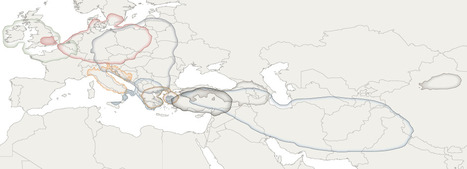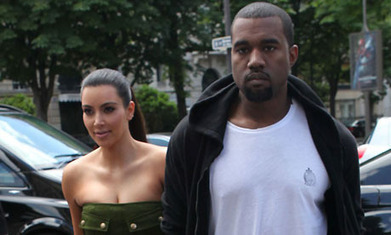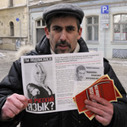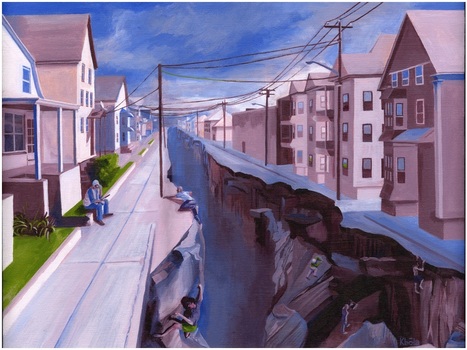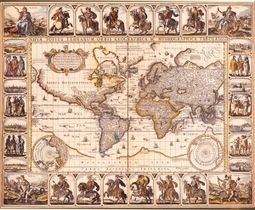Believed to be a mythical land for centuries, excavations reveal that the Land of Punt was a real land known for
Get Started for FREE
Sign up with Facebook Sign up with X
I don't have a Facebook or a X account
 Your new post is loading... Your new post is loading...
Matthew DiLuglio's curator insight,
October 12, 2013 6:37 PM
I think the men who prohibit public breast-feeding of babies should be starved. I have a baby cousin, whom I love dearly, and I would hate to delay his lunch as much as anyone else would hate to have their own lunches delayed. To prohibit public-breastfeeding is cruel, discriminatory, and hypocritical, as these prohibitors were likely publicly breastfed at some point in their infant days. A message overall about other people acting 'scandelously'- get over it. Grow up. I don't like having to hear from or about you, and it takes away from my definition of a perfect world when I see people starving my baby cousin. Culture should accomodate to the entirety of the population, not a majority. After all, as for babies- we've all been there, and as for old people- we'd be lucky to live that long, but we'll llikely be there too. I don't think we should be governed by someone that some people elect and other people don't vote for, because it's really not fair... it would be better and a compromise to not be governed at all! So don't be critical, be understanding... Peace and Love!

Jason Schneider's curator insight,
March 5, 2015 4:54 PM
About 35 percent of Latvia's population (5,000,000) contains Russian ancestors. Russia does not want to give Latvia credit for practicing Russian languages and the Russian heritage because Russian feels like since they take up about 11% of the world, they don't need to share their heritage with any other country. It's kind of like copyright laws that Russia seems to have. 
Martin Kemp's curator insight,
December 17, 2015 1:37 PM
this article is great. the latvians are doing the right thing. in the place you live and where you are from, the people should speak your language and follow your rules. you should be worried about what the native people want and not what others want. be proud of your culture and preserve it.
Gene Gagne's curator insight,
December 10, 2015 7:14 PM
This reminds me of what we learned in class about American people or white folks in general go to a native island and want to see the natives uncivilized and not up with the times of technology, clothes, homes made of up to date material. They want to see grass skirts, old tools, tribal living. The white folks see modern times already they want to see old things. 
Martin Kemp's curator insight,
December 14, 2015 12:19 PM
I think exercises like this are really cool, there are a lot of these experiments that go on with culture swaps and I always find the reactions when returning home to be probably the most interesting, just like in this video it is a large celebrations and it helps to put things in perspective 
Matt Ramsdell's curator insight,
December 14, 2015 8:42 PM
This is a show that is based on how we see and view daily life of native people as compared to our own. How ever I feel as though this show is more based on the how these people actually live rather then adapting and learning to the area that they are in. It does show how globalization plays an important role in the show. |
Cynthia Williams's curator insight,
July 29, 2013 12:33 PM
The picture ‘Political Landscapes,’ is a portrait of the haves and the have not’s and it illustrates the widening chasm of socioeconomic levels with the top 1% gaining and the rest steadily losing ground.
The decline of industry very often leads to the decline in jobs, schools and local government. With the erosion of the tax base cities are no longer able to maintain these institutions.
Donald Dane's comment,
December 10, 2013 8:41 AM
this picture meant a lot to me simple due to the fact that I've lived in the city of providence for the last three years now. everywhere I look in the city shows an identical view to this picture that protrays inner-city compact houses vs grass and space of the kind of suburbs. on the right is the inner-city version where houses are only separated by a one car width driveway and are two to three stores high to accommadate more families and people. the left side of the picture protrays a more suburb area of the city. but this area isn't necessarily the suburbs because it would be an area just minute outside of the busy city center like a north providence or east providence area. in north providence yes you technically have a yard and grass but it is so small that you mine as well have scissors to cut the lawn. with a bite more space houses being more single family oriented this is more luxurious than the left side of the picture

Denise Pacheco's curator insight,
December 17, 2013 1:27 PM
This pictures shows the difference between the city and suburbs. Even in the same city, you can have some parts that look more economically wealthier. But looking at it from a political view, I would guess that the whole in the ground that divides the two neighborhoods would be the line that divides democrats and republicans. City folk tend to vote more democrat because they want the government to assist the people. WHile Republicans tend to look out more for themselves.

Seth Dixon's comment,
November 14, 2011 4:05 PM
The "Nacirema" are "American" spelled backwards (or interpreted backwards).
|







